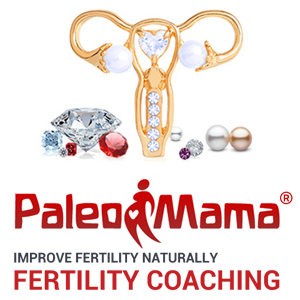Nutrition
Anthropologists believe that the rise of human species started about two million years ago, telling by the earliest stone tools which date to about 2.5 million years back.
Even though a detailed reconstruction of life of prehistoric humans isn’t possible, we can quite safely assume that it was in many details similar to the life of the tribes of hunters and gatherers who still live on Earth today. So, we are talking about people such as the Hadza, the Aka, and the Efé.
Is there anything special about their fertility and nutrion that could be insightful for us today?
Our distant ancestors were definitely tough and hardy fighters. They were able to survive in the savannah, in the steppe, and in the jungle, in hot, sub-Saharan Africa, as well as in the cold, European north.
As for their nutrition, they ate everything that they could dig up, gather, or hunt. That means that they ingested rather irregular and unbalanced meals with large variations in the amounts of carbohydrates, proteins, and fats they had on any particular day.
If you translate these facts into the language of biology, then it means that the human is an omnivore by nature. He is physiologically adjusted to a varied diet, without too much sugar, and can well cope with irregular meals, or even hunger. His nutrition, however, contained no chemical additives.
Please take one breath of time and try to imagine that close 99 percent of our evolutionary time has passed in such a life-rhythm.
Abundance of food was initially a win-win for everyone
It was only about ten thousand years ago that some hunting and gathering tribes developed the systematic breeding of plants and animals. The benefits were obvious: for the first time in history, our ancestors didn’t have to overcome large distances every day anymore to find food!
In addition to not having to walk, run, and jump so much anymore (and exposing themselves to predators at the same time), they were able to feed their children with the milk of animals they had domesticated!
That resulted in mothers being able to reduce the nursing period of their children to a few months instead of 3 to 5 years. By the way, there is a great book from the evolutionary biologist Dr. Sarah Hrdy (Mothers and Others) which I totally love and in which you can find more information about this topic.
Thanks to this new source of food, small children had a greater chance of surviving even if their mothers died, worked outside, or got pregnant again too soon, so that the number of offspring and the gaps between generations became shorter. Both nutrition and fertility, in terms of food abundance and number of offspring took off.
This predominately sedentary lifestyle enabled large families, whose members were now able to work in the fields and grow even more food than necessary for the barest survival. The abundance of calories led to more security and predictability, increasing at first both fertility and fecundity (quality and the quantity of children they had).
This newly acquired security protected humans from many dangers, such as attacks by wild animals, variable climatic conditions, or unpredictable natural events. The new abundance of food and an entire spiral of additional factors (and all of the effects resulting from that), caused a general growth in the vitality of the human species as well as a faster growth rate. On the other hand, the nutritional style of our ancestors entered a new dimension: The largest calorie intake of these former hunters and gatherers now came from plants (such as grains), which had, up until then, represented only a small proportion of their nutrition.
References:
- Eaton SB, Konner M, Shostak M. Stone agers in the fast lane: chronic degenerative diseases in evolutionary perspective.Am J Med. 1988 Apr;84(4):739-49.
- http://www.mayoclinic.com/health/mediterranean-diet/CL00011
- Juhl M, Olsen J, Andersen AM, Grønbaek M. Intake of wine, beer and spirits and waiting time to pregnancy. Hum Reprod. 2003 Sep;18(9):1967-71.
- Konner M, Eaton SB. Paleolithic nutrition: twenty-five years later. Nutr Clin Pract. 2010 Dec;25(6):594-602.
- Matorras R, Ruiz JI, Mendoza R, Ruiz N, Sanjurjo P, Rodriguez-Escudero FJ. Fatty acid composition of fertilization-failed human oocytes. Hum Reprod. 1998 Aug;13(8):2227-30.
- Selesniemi K, Lee HJ, Muhlhauser A, Tilly JL. Prevention of maternal aging-associated oocyte aneuploidy and meiotic spindle defects in mice by dietary and genetic strategies.Proc Natl Acad Sci U S A. 2011 Jul 26;108(30):12319-24.
- Sofi F, Abbate R, Gensini GF, Casini A. Accruing evidence on benefits of adherence to the Mediterranean diet on health: an updated systematic review and meta-analysis.Am J Clin Nutr. 2010 Nov;92(5):1189-96.
- Ströhle A, Hahn A, Sebastian A. Latitude, local ecology, and hunter-gatherer dietary acid load: implications from evolutionary ecology.Am J Clin Nutr. 2010 Oct;92(4):940-5.
- Ströhle A, Hahn A. Diets of modern hunter-gatherers vary substantially in their carbohydrate content depending on ecoenvironments: results from an ethnographic analysis.Nutr Res. 2011 Jun;31(6):429-35.
- Toledo E, Lopez-del Burgo C, Ruiz-Zambrana A, Donazar M, Navarro-Blasco I, Martínez-González MA, de Irala J. Dietary patterns and difficulty conceiving: a nested case-control study. Fertil Steril. 2011 Nov;96(5):1149-53.
- Twigt JM, Bolhuis ME, Steegers EA, Hammiche F, van Inzen WG, Laven JS, Steegers-Theunissen RP. The preconception diet is associated with the chance of ongoing pregnancy in women undergoing IVF/ICSI treatment. Hum Reprod. 2012 Aug;27(8):2526-31.
- Vujkovic M, de Vries JH, Lindemans J, Macklon NS, van der Spek PJ, Steegers EA, Steegers-Theunissen RP. The preconception Mediterranean dietary pattern in couples undergoing in vitro fertilization/intracytoplasmic sperm injection treatment increases the chance of pregnancy.Fertil Steril. 2010 Nov;94(6):2096-101.


